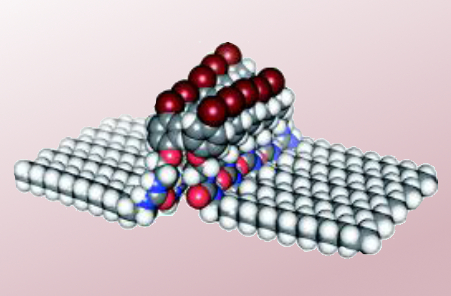Nucleation and growth are key processes when it comes to understanding how compounds self-assemble on surfaces. The nucleation–elongation mechanism forming 2D supramolecular assemblies is an important concept to realize unprecedented surface-confined, stimulus-responsive systems. These can be developed into sophisticated dynamic molecular devices, if the growth mechanism during the design of functionalized surfaces is taken into account .
Kenji Matsuda and colleagues, Kyoto University, Japan, demonstrated that growth mechanisms at a liquid/solid interface can be quantitatively investigated. They analysed the concentration dependence of surface coverage using scanning tunneling microscopy (STM) at ambient conditions.
The team developed a nucleation–elongation model for surface-confined self-assembly to investigate the Gibbs free energy in 2D self-assembly. According to the researchers, hydrogen bond strength (involving amide or urea groups) and the number of non-hydrogen atoms in a molecular component (i.e., core size and length of the alkyl side chain) play a primary role in determining the stabilization energy during nucleation and elongation processes.
- Investigation into Surface-Confined Self-Assembly Stabilized via Hydrogen Bond of Urea and Amide Groups: Quantitative Analysis of Concentration Dependence of Surface Coverage,
Nobuhiko Nishitani, Takashi Hirose, Kenji Matsuda,
Chem. Asian J. 2015.
DOI: 10.1002/asia.201500453



